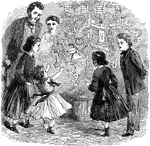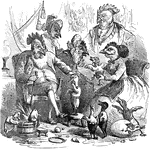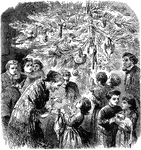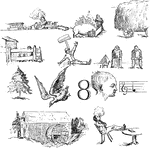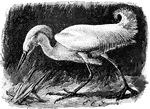
Snowy Egret
The Snowy Egret (Egretta thula) is a small white heron in the Ardeidae family. It was also known as…
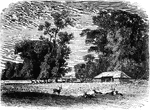
The Prater
The Wiener Prater is a large public park in Vienna's 2nd district Leopoldstadt. Prater is derived from…

Lappet Moth
Gastropacha hildei is a species of lappet moth in the Lasiocampidae family of eggars, snout moths, and…

Dorcas Gazelle
The Dorcas Gazelle (Gazella dorcas) is a small mammal in the Bovidae family of cloven-hoofed mammals.
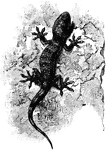
Tokay Gecko
The Tokay Gecko (Gekko gecko) is a lizard in the Gekkonidae family of geckos. It was once known as the…

Sand Fiddler Crab
The Sand Fiddler Crab (Uca pugilator) is a small crustacean in the Ocypodidae family of ghost and fiddler…
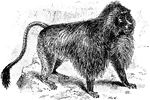
Gelada Baboon
The Gelada (Theropithecus gelada) is a baboon relative in the Cercopithecidae family of Old World monkeys.
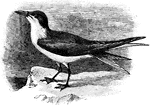
Gull-Billed Tern
The Gull-Billed Tern (Gelochelidon nilotica) is a bird in the Sternidae family of seabirds. It was formerly…
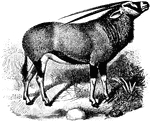
Gemsbok
The Gemsbok (Oryx gazella) is a large antelope in the Bovidae family of cloven-hoofed mammals. It was…
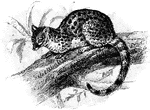
Common Genet
The Common Genet (Genetta genetta) is a small carnivore in the Viverridae family. It was also known…
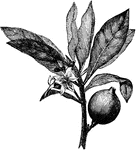
Huito
The Huito (Genipa americana) is a small tree with edible fruit in the madder family, Rubiaceae.

Woodwaxen
The Woodwaxen or Dyer's Greenweed (Genista tinctoria) is a flowering plant in the legume family, Fabaceae.

Great Yellow Gentian
The Great Yellow Gentian (Gentian lutea) is a flowering plant in the Gentian family, Gentianaceae.

Mayflower
Epigaea repens (Mayflower or Trailing Arbutus) is a low, spreading shrub in the Ericaceae family. It…

Mayflower
Epigaea repens (Mayflower or Trailing Arbutus) is a low, spreading shrub in the Ericaceae family. It…
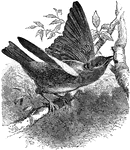
Bluebird
An illustration of a bluebird. The bluebirds are medium-sized, mostly insectivorous or omnivorous birds…

Racquet-Tailed Kingfisher
"Tanysiptera, the Racquet-tailed Kingfisher or "Paradise Kingfisher", the sexes may be similar or dissimilar,…

Common Starling
"Our familiar Starling (Sturnus vulgaris) being iridescent black, with buff markings above, and, after…
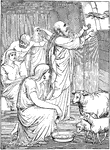
Return of the Dove to the Ark
"And the dove came in to him in the evening; and, lo, in her mouth was an olive leaf pluckt off: so…

Noah's Sacrifice after the Flood
"And Noah builded an altar unto the LORD; and took of every clean beast, and of every clean fowl, and…
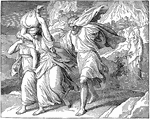
Lot and His Family Fleeing from Sodom
"And when the morning arose, then the angels hastened Lot, saying, Arise, take thy wife, and thy two…

Label Difference
"The Heir, or first son, the LABEL. The differences used by armorists at the present time are nine in…

Crescent Difference
"Second Son, the CRESCENT. The differences used by armorists at the present time are nine in number.…

Mullet Difference
"Third Son, the MULLET. The differences used by armorists at the present time are nine in number. They…

Martlet Difference
"Fourth Son, the MARTLET. The differences used by armorists at the present time are nine in number.…

Annulet Difference
"Fifth Son, the ANNULET. The differences used by armorists at the present time are nine in number. They…
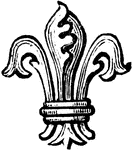
Fleur-De-Lis Difference
"Sixth Son, the FLEUR-DE-LIS. The differences used by armorists at the present time are nine in number.…
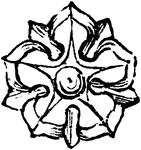
Rose Difference
"Seventh Son, the ROSE. The differences used by armorists at the present time are nine in number. They…
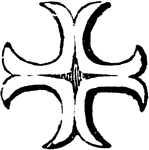
Cross Moline
"Eighth Son, the CROSS MOLINE. The differences used by armorists at the present time are nine in number.…

Double Quatrefoil
"Ninth Son, the DOUBLE QUATREFOIL. The differences used by armorists at the present time are nine in…

Lucerne or Alfalfa Plant
Alfalfa or Lucerne (Medicago sativa) is a flowering plant in the pea family Fabaceae cultivated as an…

Lucerne or Alfalfa Plant
Alfalfa or Lucerne (Medicago sativa) is a flowering plant in the pea family Fabaceae cultivated as an…
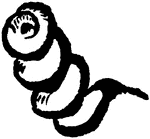
Lucerne or Alfalfa Plant
Alfalfa or Lucerne (Medicago sativa) is a flowering plant in the pea family Fabaceae cultivated as an…

Husbandmen in the Time of Solomon Going Forth to Work
Two husbandmen heading off to work during the reign of King Solomon. I Kings chapter 4 describes a time…
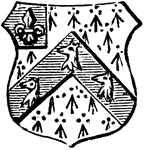
Augmentation
"Ermine, on a chevron azure, three foxes' heads erased, argent. The augmentation is in a canton azure,…

Hand and Bordure
"Argent, a sinister hand couped at the wrist and erected gules, within a bordure azure. BORDURE or BORDER.…
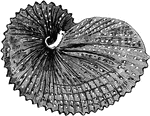
Paper Nautilus Octopuses
The argonauts (genus Argonauta, the only extant genus in the Argonautidae family) are a group of pelagic…
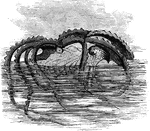
Paper Nautilus Octopuses
The argonauts (genus Argonauta, the only extant genus in the Argonautidae family) are a group of pelagic…

Coiled Chambered Shell
Baculites is a genus of extinct marine animals in the Phylum Mollusca and Class Cephalopoda. They are…
Garpikes Fish
The spotted Gar (Lepisosteus oculatus) is a primitive freshwater fish of the family Lepisosteidae, native…

Locust
A group of related genera is call a family. Schistocerca melanocera Stol from Charles Island. Locust…

Locust
A group of related genera is call a family. S. intermedia borealis Snodgrass from Abingdon and Bindloe…

Locust
A group of related genera is call a family. S. intermedia Snodgrass from Duncan Islands. Locust taken…

Locust
A group of related genera is call a family. S. literosa Walker from Chatham Island. Locust taken on…
Locust
A group of related genera is call a family. S. melanocera lineata Snodgrass from Albemarle Island. Locust…
Locust
A group of related genera is call a family. S. melanocera immaculata Snodgrass from Indefatigable Island.…
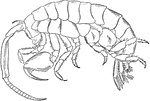
Marine Isopod
The marine isopod or sand flea (Gammarus) is in the sand, under rocks, and in the seaweed. Many are…

Locust
Locust is the swarming phase of short-horned grasshoppers of the family Acrididae. These are species…
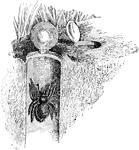
Trapdoor Spider
Spiders (order Araneae) are air-breathing chelicerate arthropods. Trapdoor spiders, of family Ctenizidae,…
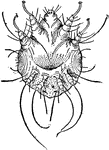
Itch Mite
The itch mite (Sarcoptes) is a genus of skin parasites, and part of the larger family of mites collectively…

Metamorphosis of a Mosquito
Mosquitoes are common flying insects in the family Culicidae that are found around the world. Mosquito…




